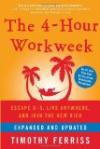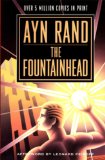Olivier Langlois's blog
Archives for: July 2007, 04
07/04/07
Security Engineering: A Guide to Building Dependable Distributed Systems
The title is maybe misleading. It is not really a guide that will show you a procedure step by step 'how to do' to build secure systems as most engineering books do. It is rather a survey of the different security protocols used in various fields. Of course, you can learn from the success and errors described in the book and use this knowledge for developing a new system but you will have to connect the dots yourself.
The book is very dense in information and at first, its format was making it tedious for me to read. It did take around 3 chapters before I get accustomed to the format. Once, this aspect was out of the way, this book became amazingly interesting. It describes systems used in banking, by diplomats, military, for nuclear weapons, police, set-up box TV decoders smart cards and anti tampering devices in general, spies, biometric authentication, etc.. and focus on the security protocols used by these systems and then highlights the weaknesses of the systems and how people have figured out how to workaround these protocols.
The best quality of the book is that it will help you to better understand the mindset of a secure system designer and a system hacker.
Beyond Fear
The content of this book slightly overlap the content of the author previous book (Secrets and Lies: Digital Security in a Networked World) but presents the material with a different angle. An angle with the perspective of a security expert that witness security measures taken by governments in reaction of the 9/11 terrorism attack and wants people to understand the absurdity of some of these measures.
It is not technical at all and does not necessitate any particular background to understand and enjoy. The author explains clearly how to make a risk assessment of something that you want to make more secure and then evaluate the cost of the security measures. Only when you have that data, you can evaluate if the added security is worth it.
These explanations are backed up with concrete examples such as evaluating the risk to make purchase with a credit card over the internet. Other examples include the absurdity of securing a lunch in a company refrigerator because the potential loss if having a lunch stolen does not justify securing it. The author also explains that even with technologies that looks very accurate such as facial recognition with an error rate of, let’s say, 0.0001 % are totally ineffective when they have to control a huge number of persons like a stadium crowd because even with this accuracy, they would create an unmanageable amount of false positive alerts.
The author also elaborate about why you should question the motivation of a security provider when it is a third party and link this with how people fears can be exploited to introduce invasive, excessively expensive and inefficient security measures. I think that the goal of the author was to make people more critics about security questions and my opinion is that his goal has been successfully achieved.
Olivier Langlois's blog
I want you to find in this blog informations about C++ programming that I had a hard time to find in the first place on the web.
| Sun | Mon | Tue | Wed | Thu | Fri | Sat |
|---|---|---|---|---|---|---|
| << < | Current | > >> | ||||
| 1 | 2 | 3 | 4 | 5 | 6 | 7 |
| 8 | 9 | 10 | 11 | 12 | 13 | 14 |
| 15 | 16 | 17 | 18 | 19 | 20 | 21 |
| 22 | 23 | 24 | 25 | 26 | 27 | 28 |
| 29 | 30 | 31 | ||||
Search

Categories
Olivier Langlois's blog
- AAC (2)
- Book reviews (12)
- C++ (24)
- Code Optimization (4)
- Compiler (3)
- Fractal (2)
- Linux/UNIX (3)
- Multithreading (3)
- Software security (7)
- TCP/IP (8)
- Web (1)
- Windows programming (19)
- C++ (28)
- tutorials (4)
- General (10)
- Hardware reviews (2)
- Linux (12)
- Recommended books (4)
- C++ (20)
- Code Optimization (2)
- Compiler (3)
- Fractal (2)
- Linux/UNIX (1)
- Multithreading (2)
- Rare out of print (3)
- Software security (5)
- TCP/IP (7)
- Windows programming (16)
- Software reviews (0)
- TCP/IP (8)
- Video games (4)
Archives
- January 2016 (1)
- September 2015 (1)
- July 2015 (1)
- June 2015 (1)
- May 2015 (1)
- December 2013 (3)
- September 2013 (1)
- May 2013 (8)
- April 2013 (1)
- December 2010 (1)
- August 2010 (1)
- June 2010 (1)
- More...
Misc
 XML Feeds
XML Feeds
What is RSS?
Who's Online?
- Guest Users: 4
 BOOKS i'm reading
BOOKS i'm reading





